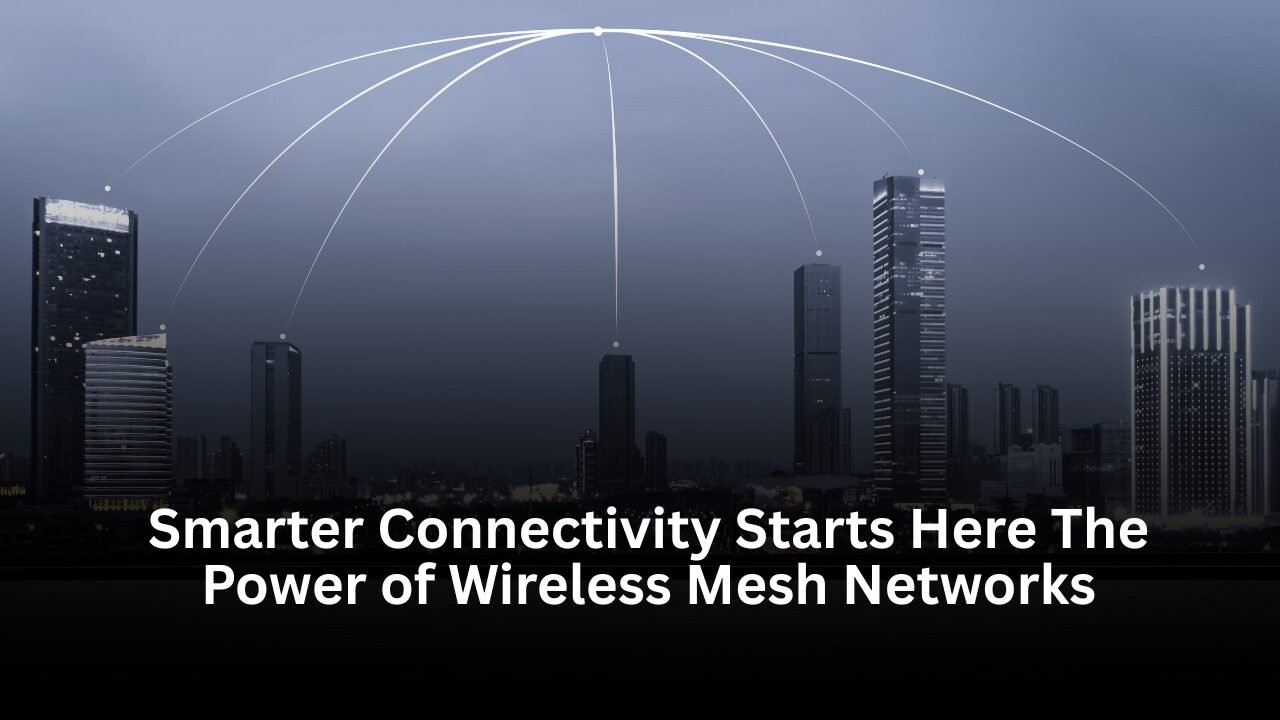Introduction:
In today’s hyper-connected world, reliable connectivity isn’t a luxury — it’s a necessity. From underground mines to bustling smart cities, networks are the invisible backbone keeping data, devices, and people connected. Traditional wired systems and single-point Wi-Fi setups often fail to deliver the flexibility, range, and resilience that modern environments demand.
That’s where wireless mesh networks (WMNs) come in — a smarter, simpler, and stronger solution reshaping how industries, fleets, and communities stay connected. Designed for scalability and dependability, mesh technology is transforming everything from fleet management systems to smart city wireless solutions and even underground mining operations.
What Is a Wireless Mesh Network?
A wireless mesh network (WMN) is a decentralized system where multiple access points (nodes) communicate directly with each other. Unlike traditional networks that rely on a single router, a mesh network ensures that if one node fails, data automatically reroutes through another — keeping the connection stable and continuous.
In simple terms, it’s a network that “heals” itself and adapts to changes automatically. This flexibility makes it ideal for harsh or complex environments like large industrial sites, transportation fleets, and remote mining operations.
Smarter Connectivity: Adapting to Every Challenge
Smart doesn’t just mean fast — it means intelligent connectivity. Wireless mesh wifi are designed to optimize performance automatically. Each node identifies the best route for data transmission, ensuring seamless communication even when devices move or the environment changes.
For example, in a fleet management system project, vehicles equipped with mesh-enabled devices can communicate in real time with control centers and each other. This allows for:
- Continuous tracking and coordination, even in remote areas.
- Instant alerts about maintenance, fuel status, or emergencies.
- Reduced downtime due to better operational insights.
By using self-learning algorithms, the network grows smarter with every data exchange — a key reason why industries are rapidly adopting this technology.
Simpler Networks: Redefining Installation and Maintenance
Traditional wifi networks often require extensive cabling, complex setup, and dedicated management systems. In contrast, wireless mesh networks are plug-and-play by design. Each node can be easily added or removed without disrupting the network.
This makes mesh technology perfect for smart city wireless solutions where thousands of sensors, cameras, and IoT devices need to stay connected across wide areas. Benefits include:
- Quick deployment with minimal infrastructure.
- Automatic configuration of new devices.
- Scalable networks that can grow with city demands.
For municipalities and industries, this simplicity translates into lower costs, faster implementation, and easier long-term management.
Stronger Connections: Built for Tough Environments
Not all networks can withstand extreme conditions — but mesh WiFi solutions for mines can. Underground mining environments are notorious for poor signal coverage due to physical barriers and harsh surroundings.
Mesh WiFi nodes, built with rugged hardware, provide reliable and continuous connectivity even deep underground. Here’s how:
- Each node relays data to the next, maintaining a strong signal throughout tunnels.
- Real-time communication supports worker safety and coordination.
- IoT-enabled sensors help monitor air quality, equipment status, and energy use.
These best WiFi solutions for underground mining improve not only efficiency but also safety — giving miners real-time information that can save lives.
Wireless Mesh Networks in Action: Industry Transformations
- Mining and Industrial Operations
From underground mines to open-pit sites, mesh networks provide seamless connectivity for autonomous equipment, surveillance cameras, and monitoring sensors. Operations become more efficient, safer, and data-driven.
- Fleet Management and Logistics
A modern fleet management system project powered by mesh connectivity enables vehicles to stay in touch even in low-signal areas. It ensures real-time tracking, route optimization, and maintenance alerts — reducing costs and improving fleet uptime.
- Smart Cities and IoT Integration
Smart city wireless solutions rely on dense, interconnected networks. Mesh technology links everything — traffic lights, public WiFi, surveillance, environmental sensors — to create intelligent urban ecosystems that respond dynamically to citizens’ needs.
- Emergency and Military Communication
In disaster recovery or defense scenarios, where infrastructure may be damaged or unavailable, mesh networks offer rapid, reliable communication without dependence on fixed towers or cables.
Key Advantages of Wireless Mesh Networks
- High Reliability: Self-healing architecture ensures uninterrupted service.
- Scalability: Add nodes easily as coverage needs grow.
- Cost Efficiency: Minimal cabling and low maintenance reduce total costs.
- Mobility: Ideal for moving assets like fleets or equipment.
- Security: Encrypted communication across multiple nodes enhances protection.
These features make WMNs a long-term investment for future-ready industries.
The Future of Connectivity: Mesh at the Core
As digital transformation accelerates, the demand for fast, resilient, and adaptive networks will only increase. Mesh networks sit at the heart of this evolution — enabling Industry 4.0, IoT ecosystems, and next-gen communications.
Whether it’s connecting vehicles in a fleet, powering smart city grids, or supporting life-critical operations in mines, wireless mesh networks are not just an upgrade — they’re a revolution in how we think about connectivity.

Conclusion:
Smarter, simpler, and stronger — that’s the promise of wireless mesh technology. It delivers intelligent, flexible, and high-performance connectivity for every environment, from deep underground to sprawling cities.
As industries evolve and digital demands grow, embracing mesh WiFi solutions for mines, smart city wireless systems, and fleet management networks will be key to staying connected, efficient, and future-ready.
The world is moving toward smarter connectivity — and wireless mesh networks are lighting the way forward.
FAQ’s
Traditional Wi-Fi relies on a single access point, creating weak spots as you move away. Wireless mesh wifi networks use multiple nodes that communicate with each other, ensuring full coverage and no signal dropouts.
Yes, absolutely. Mesh WiFi solutions for mines provide strong, uninterrupted coverage even in deep tunnels where wired connections or standard Wi-Fi fail. They improve safety, communication, and monitoring in mining operations.
Smart city wireless solutions use mesh technology to connect traffic lights, sensors, cameras, and public Wi-Fi systems — creating an intelligent, responsive, and sustainable city network.
Yes. In a fleet management system project, mesh connectivity ensures vehicles communicate in real time with headquarters and with each other — even across remote routes — improving safety, tracking, and efficiency.
Mining, transportation, logistics, public safety, defense, manufacturing, and smart cities — all can leverage mesh networks for improved reliability, flexibility, and performance.
